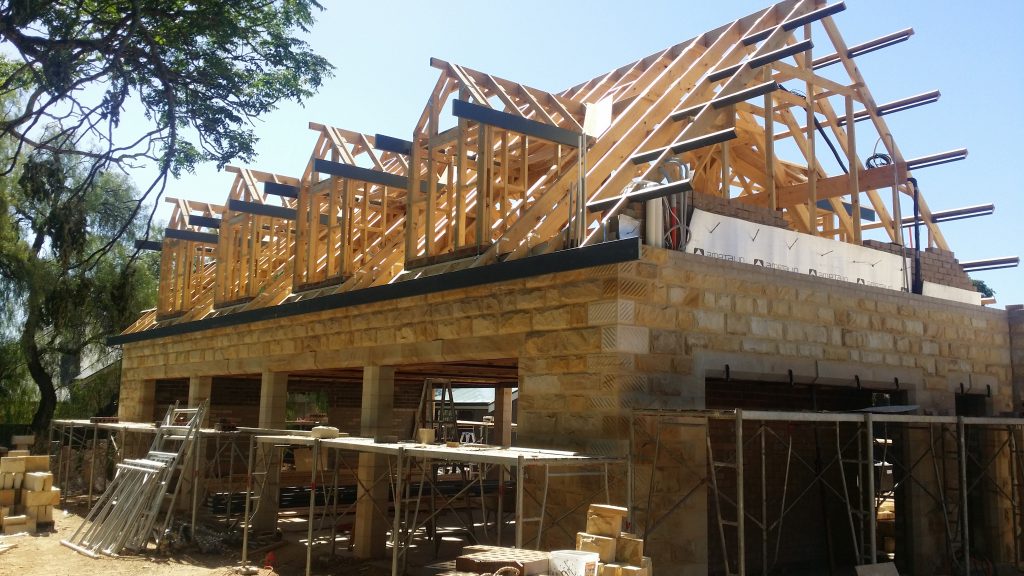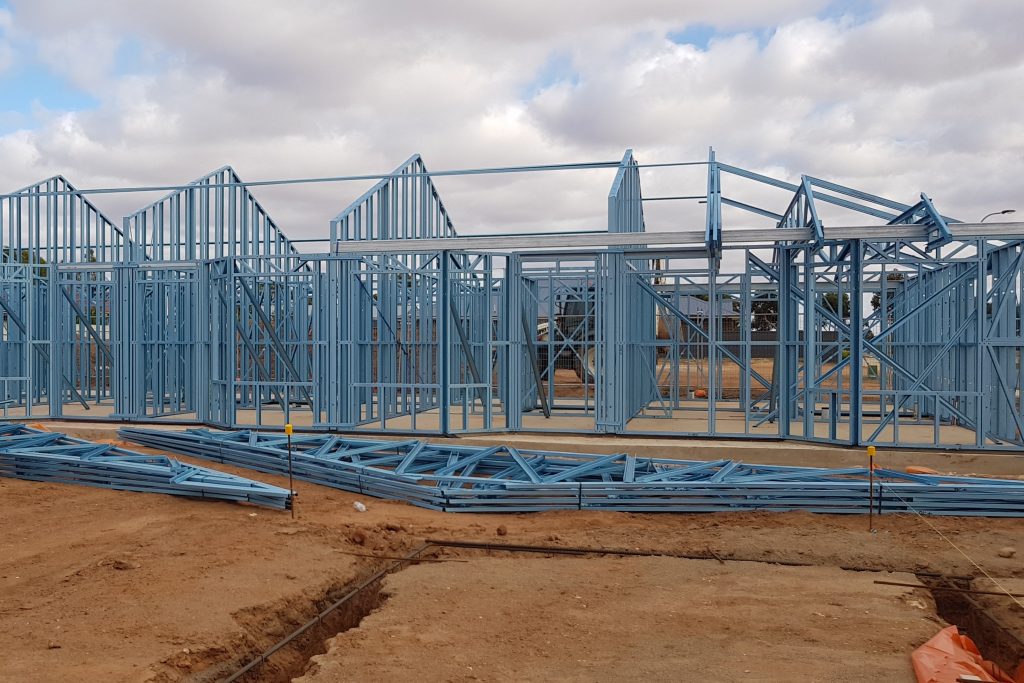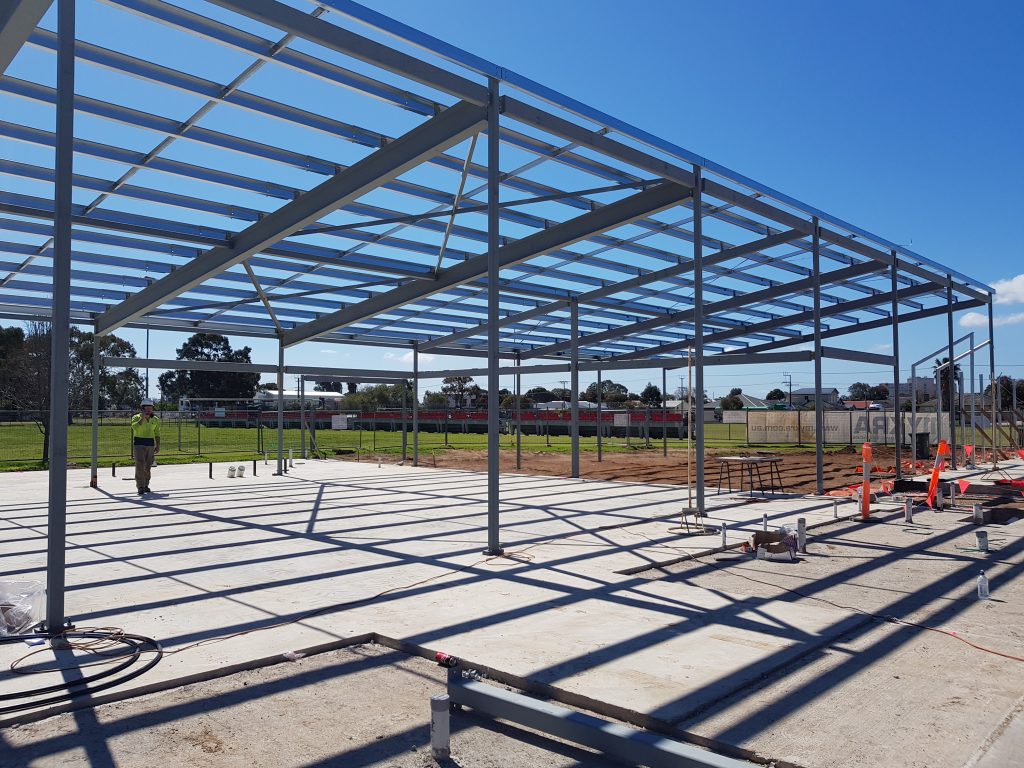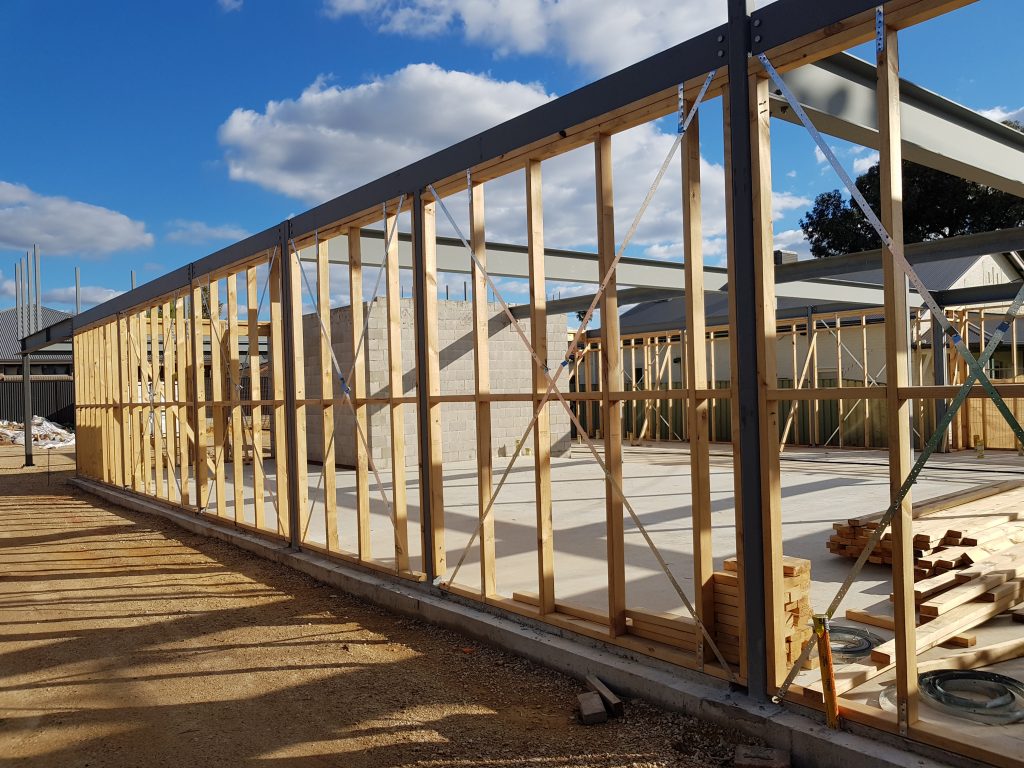Steel Vs Timber Framing,
Residential & Low-Rise Commercial Projects
When building a new home, you may be undecided regarding what materials to use for your framing. Here is a quick guide to help you select the right choice for your project.
Pros of Using Timber

- Natural Product – Timber is made from natural, sustainable resources. It is non-toxic, safe to touch and will not leak chemicals.
- Rust Resistant – Unlike steel, it will not rust if exposed to air and moisture, making it better to use in coastal areas, or if you are building in a high humidity area.
- Quick Build Time – Timber framing is generally constructed rather quickly and is objectively straightforward to install due to being lightweight and not requiring as much lifting equipment as steel.
- Easier for Décor – Timber framing makes changing your home with things such as attaching wall art, installing surround sound or adding cabinetry simple. When it comes to steel frame installing these types of things can be difficult as you’ll need to ensure you use the right studs and construction materials to ensure they fit with the frame.
Cons of Using Timber
- White Ants – If timber isn’t properly treated it won’t be resistant to termites. However, if fully treated with the right products white ants shouldn’t be a real issue.
- Human Errors – Despite how easy it is to install, human error can still occur during the process, which can lead to extended time and require tradespeople on site for longer than anticipated, increasing construction times.
Pros of Using Steel

- Low Environmental Impact – Steel is one of the most recycled materials on earth and framing is all 100% recyclable. Using steel frames can also allow for the ability to seal around the door frames and windows, which can lower heating and cooling needs, therefore, reducing the building’s environmental impact in the long run as well.
- Termite Resistant – Naturally 100% termite proof. This doesn’t mean your house won’t need some termite treatment, as other parts of the house may still be made of timber, however, as far as the frame is concerned termites will never be an issue.
- No Change of Warping – A steel frame will not naturally twist, warp, shrink or buckle.
Cons of Using Steel
- Rust – If the steel frame is not sealed properly and is subjected to moisture in the air, it can start to rust and corrode. However, this is highly unlikely with modern galvanised steel.
- Creaking – Frames will move a bit in their time and when steel framing moves it can creak or make strange sounds. However, the creaking can be minimised, if not eliminated entirely, by using fixed brackets, connections and secure screws and bolts.
Durability Steel vs Timber

Generally, steel is considered far more durable than timber. However, as long as the structure is designed and built by a professional engineer and meets Australian Standards the quality and strength of the building will easily meet the test of time regardless of the frame material used.
Cost of Steel vs Timber
Timber is readily available and easily sourced, often making it more affordable than steel. However, as most of the construction occurs on site, waste may be created, and an increase in labour cost may occur. When it comes to the cost of manufacturing and installing steel, there are a variety of different factors that may affect the price. For example, most steel frames are pre-fabricated for efficiency purposes, meaning reduced labour fees to install. This also helps reduce wastage which also lowers the cost.
Bottom Line

Combined Steel & Timber Framing – Small Retail Building
Both steel and timber have their uses and their pros and cons. It should be noted if you do build by the seaside or somewhere known for its humidity, it is not wise to use steel, as there is a small possibility that it will rust, and humidity will only make it worse. However, if you’re living somewhere known for its white ant problems, you may wish to consider steel over timber. In general, it doesn’t matter which material is used for a building, as long as the frame is built correctly and to standards, it has the potential to last an incredibly long time.
When building a single dwelling either option is suitable, but timber is generally the preferred option. When it comes to scaling projects and building multiple dwellings on a site, cost savings can be achieved with prefabricated steel framing as it decreases construction time and installation costs, making it cheaper overall. The more dwellings built on the site, the larger the savings in cost there will be by using steel.
References:
aaronbuilding.com.au
weeks.com.au
www.newlivinghomes.com.au
www.ibuildnew.com.au
